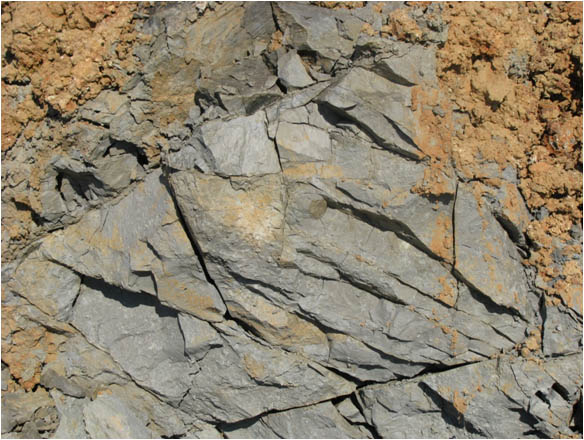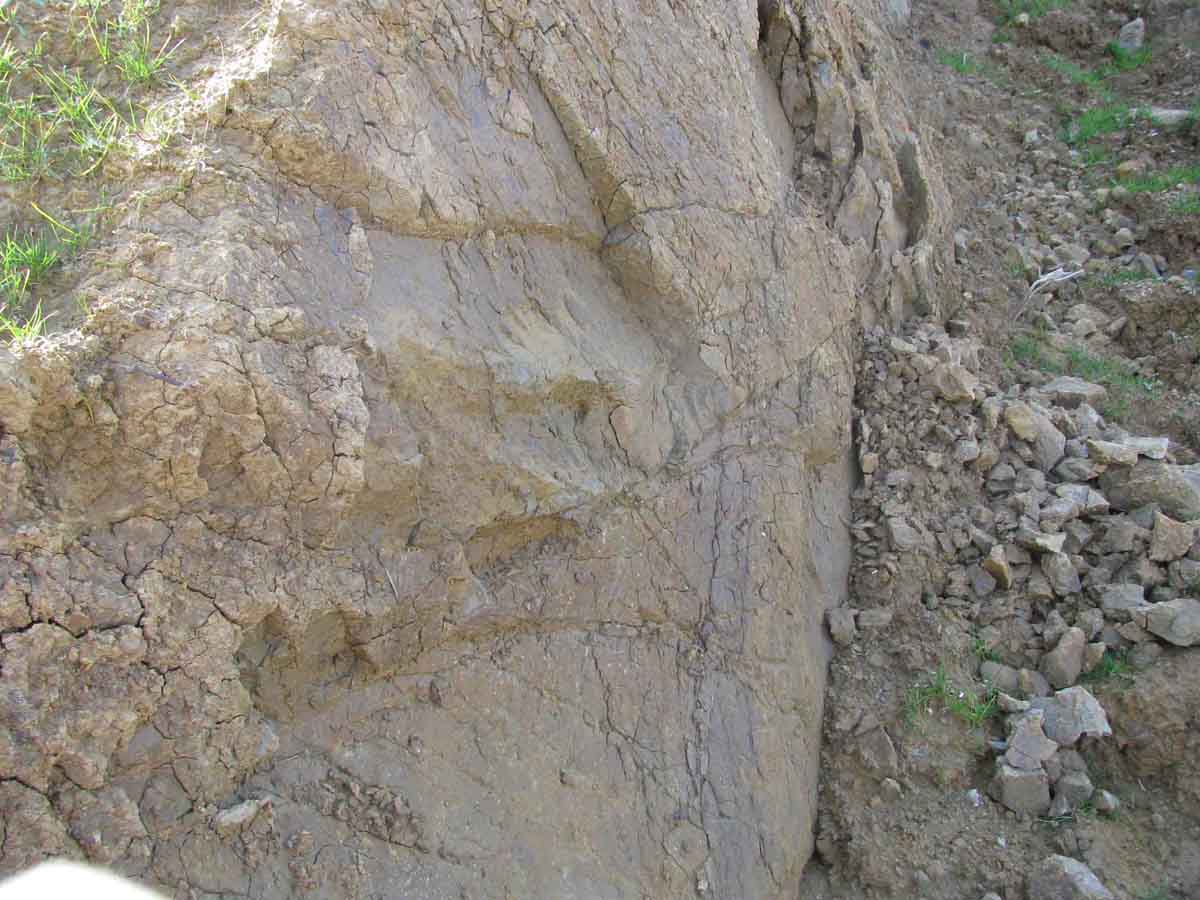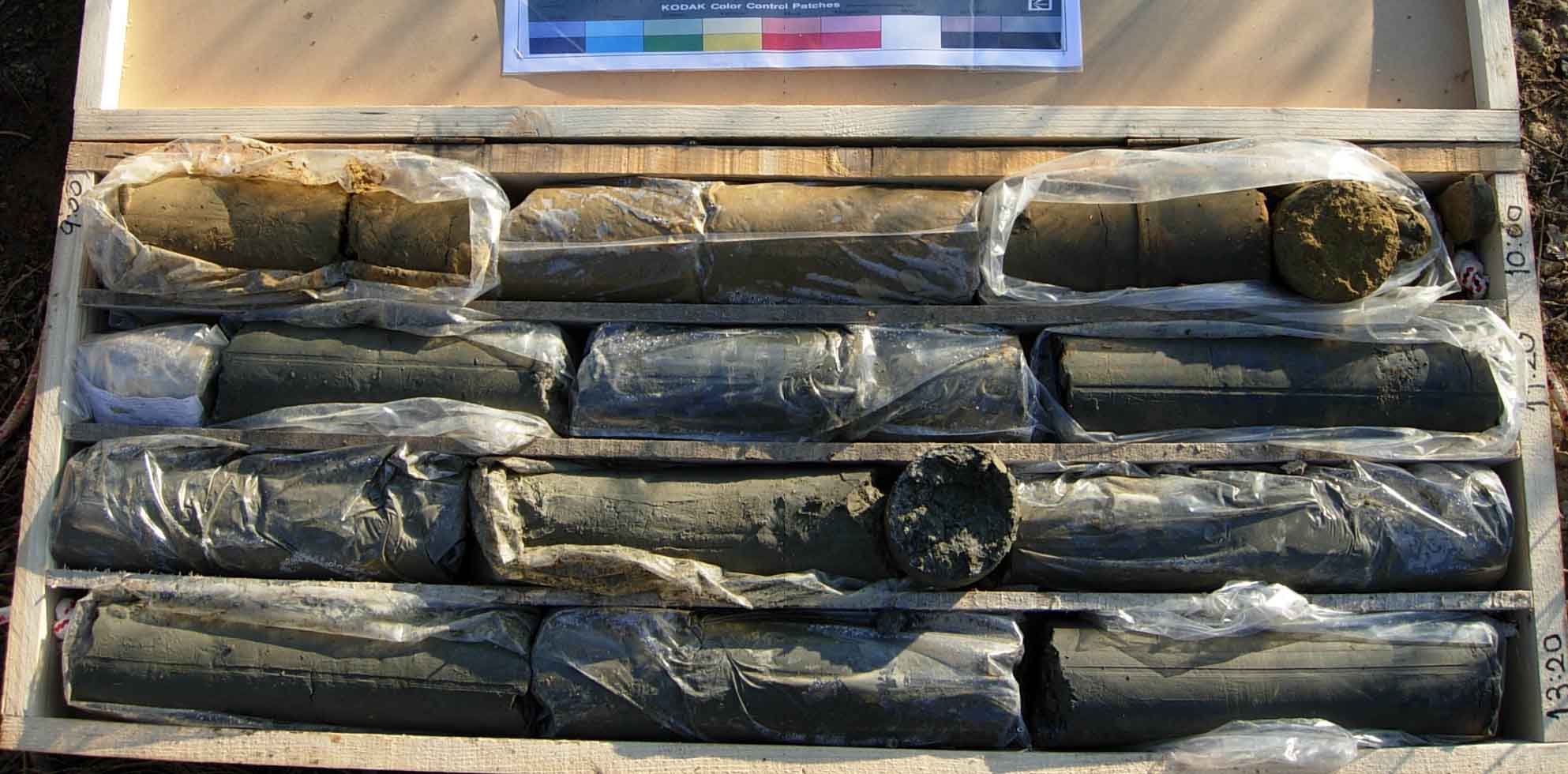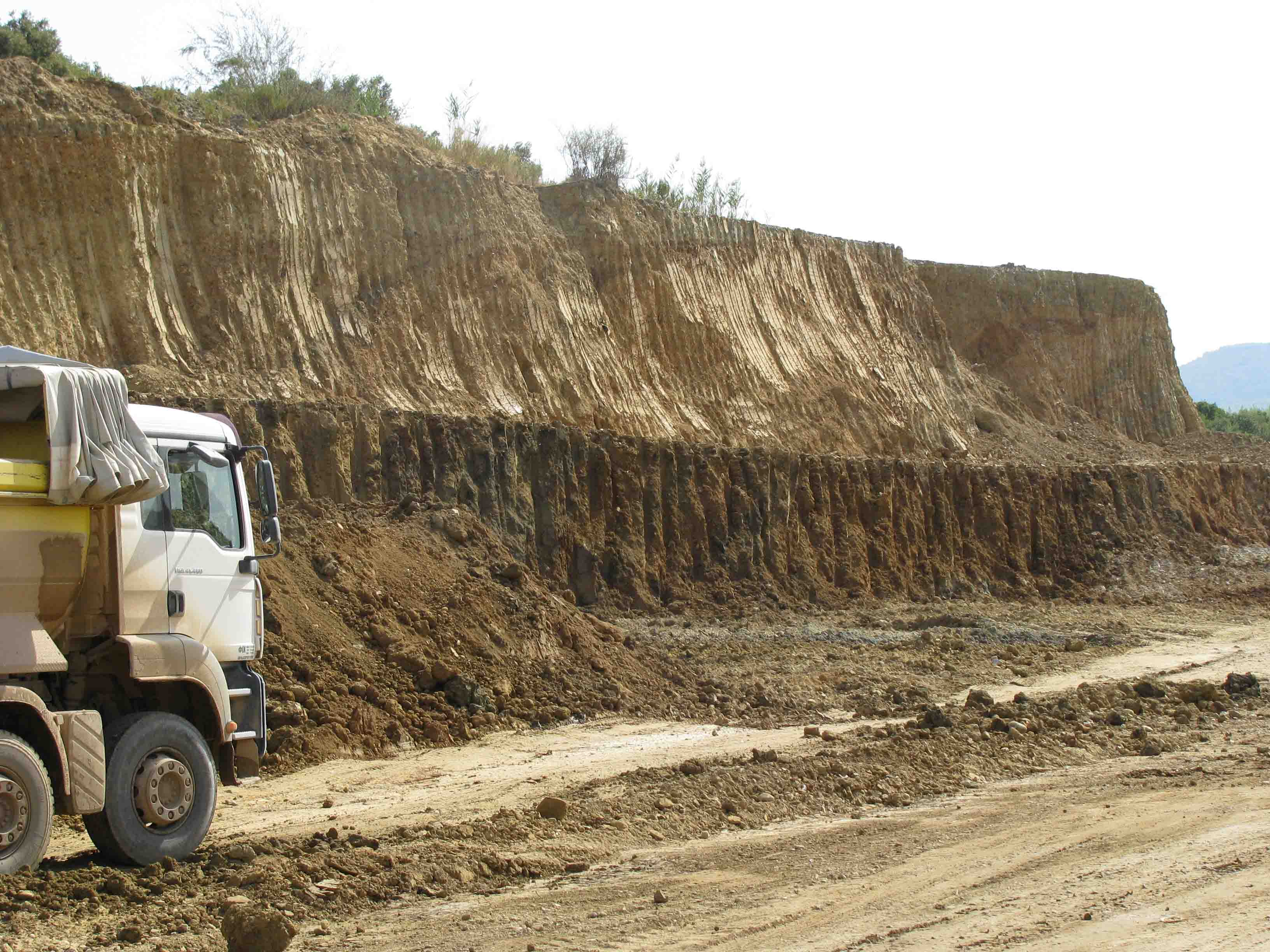A very difficult issue is the design of slopes or cuts in stiff fissured clays (pic 1). The difficulty lies in the evaluation of shear strength for stability calculations. Much work has been done on this issue especially by Skempton (1964) with his excellent Forth Ranking Lecture titled: “Long-term stability of clay slopes” and many others have contributed significantly on this issue.
In the classical Terzaghi, Peck and Mesri, 1996 book the following is mentioned regarding this issue: “Almost every stiff clay is weakened by a network of hair cracks or slickensides.” (pic.2). “If the surfaces of weakness subdivide the clay into fragments smaller than about 25mm, a slope may become unstable during construction or shortly thereafter. On the other hand, if the spacing of the joints is greater, failure may not occur until many years after the cut is made.”
The reduction in strength with time, due to the presence of fissures, has been attributed to swelling and softening due to water infiltration in this hairline cracks especially when stress relaxation and crack opening occurs in excavated slopes.
Laboratory shear strength evaluation of such stiff fissured clays is difficult because large samples are required in order to include significant number of hairline cracks and even if such samples can be tested, the long term swelling and softening cannot be fully developed in the laboratory.
Duncan and Wright (2005) propose, based also on the work of Skempton (1970) to use the fully softened strength for long term slope stability evaluation of stiff fissured clays that have not undergone any prior movement or failure. This fully softened strength can be correlated to the peak strength of normally consolidated clays. In the laboratory the fully softened strength is evaluated on remolded samples of stiff fissured clays.
A very recent paper by VandenBerge, Duncan and Brandon, 2013 presents the outcome of a workshop that took place in 2011 at Virginia Tech, regarding the fully softened shear strength for stability of slopes in highly plastic clays.
In this paper the most recent views regarding the softening process, the way to measure or estimate the fully softened strength and how and when to use it in stability analysis are presented. Together with the paper of Vanderberge et al, it is worth reading the Lade paper in Engineering Geology (2010), titled “The mechanics of surficial failure in soil slopes” where a power function failure model is proposed for the shear strength of clay for shallow stability evaluation. This criterion is mentioned also in the paper by VandenBerge et al (2013).
I would like to bring attention on some issues which are mentioned also in the papers but relate more to practical issues of the subject:
- Great care should be given when site investigation is executed and evaluated in such stiff fissured caly materials
 . If core samples are not collected then it is very difficult to distinguish between stiff clay and stiff fissured clay. Even when samples are collected, great care should be given to break up some core samples because the fissuring will not be observed as can be seen in the picture 3.
. If core samples are not collected then it is very difficult to distinguish between stiff clay and stiff fissured clay. Even when samples are collected, great care should be given to break up some core samples because the fissuring will not be observed as can be seen in the picture 3. - In situ tests such as SPT will produce high values, misleading the investigator to think that a very strong (even cemented) material is found.
- Shear strength tests on intact samples will produce high values of cohesion, again misleading the investigator to believe that a very strong material is present. In the laboratory the fissuring may not be reported during sample preparation due to the small sizes required.
- The additional difficulty comes on how to persuade the Owner or Contractor about the problems (failures) that
 may be formed after the slope has been excavated (maybe after very long time). They will evaluate the data from the investigation which show high values and if they are not fully aware about the behavior of stiff fissured clays they will push for a more optimistic design in order to reduce excavation volumes. The situation becomes even more difficult in design – built projects where during excavation the contractor may need to use hydraulic hammers to break up the material and steep slopes are stable (pic. 4). In such situation everybody “blames” the designer for a very conservative design if fully softened shear strength has been used.
may be formed after the slope has been excavated (maybe after very long time). They will evaluate the data from the investigation which show high values and if they are not fully aware about the behavior of stiff fissured clays they will push for a more optimistic design in order to reduce excavation volumes. The situation becomes even more difficult in design – built projects where during excavation the contractor may need to use hydraulic hammers to break up the material and steep slopes are stable (pic. 4). In such situation everybody “blames” the designer for a very conservative design if fully softened shear strength has been used. - The evaluation of existing stable slopes not designed with fully softened shear strength is another difficult situation. If the fully softened shear strength is used the FS may be found to be even below unity FS<1.0 but the slope is stable for a couple of years after excavation. It is difficult to persuade the Owner of such slopes (usually highway or railway) that in the future stability problems may occur.
- Finally it is very difficult to evaluate in what part of the slope and how deep you will use fully softened values especially for high slopes.
- Another critical issue is the evaluation of the long term pore pressures to be used in the analysis. In my opinion this is the most difficult issue but I will get back on this in another entry because much could be said.
As a closing remark I would like to state the final conclusion of the Vanderberge et al, 2013 paper: “Consideration of local experience with regard to slope performance, recognition of the possible consequence of slope failures, and application of sound engineering judgment are all essential elements of a comprehensive approach to geotechnical engineering of slopes.”

Chrys,
Very interesting post. Thanks, I enjoyed reading it.
When thinking of this sort of problems I often like to develop the stress paths required for such mechanisms. It helps me understanding better the soil behaviour required for such a mechanism. I had a go at developing such a stress path (hopefully right) which I copied on this link:
https://dl.dropbox.com/u/93651801/Stress_path_for_undrained_excavation.JPG
Looking at such graph we understand the concept of the “fully softened” strength by Skempton. Although not shown, at large deformations the soil will Eventually reach the residual strength upon formation of the slip planes causing the clay grains to slip over one another significalty reducing the strength below critical state strength as indicated in the Skempton graph you present.
It is important to note the assumption in the graph of an elastic isotropic soil which causes the effective stress path (ESP) during the undrained excavation to be vertical but not necessarily the most appropriate or strictly correct assumption for fissured clays. In addition, I have not considered the several cycles of wetting/drying involved so it it a simplified case.
Having said that, there is a good paper on such a topic, and you’ll probably like having a look:
Take WA and Bolton MD (2011) Seasonal ratcheting and softening in clay slopes, leading to first-time failure. Geotechnique 61(9): 757–769.
Gentlemen,
This is a very interesting discussion. From a practical point of view, it seems to me quite difficult (and even not logical!)for any Client to agree on the use of a fully-softened shear strength for the stiff-fissured clays. The problem is intimately related to the local weather and ground water conditions. In addition, the softening of clay shall start from the cut surface, involving some kind of progressive failure going deeper and deeper with time of exposure.
Therefore, I would recommend to design the slope according to the undisturbed but fully-saturated state of the clayey samples, with the necessary provision of some kind of surface protection (shotcrete or equivalent)which may convince the Client and yet, will result in a more economical solution than assuming a fully-softened strength from reconstituted clay samples.
Regards and congratulations for this new site.
Agreed Ali. Bolton in his Rankine Lecture (2012) said that is all about the MSD approach-mobilised shear strenght design.
Important topic. I also recommend Mesri and Shahien (2003) that discusses residual shear strength in first-time slides, and also presents laboratory data on fully softened strength.